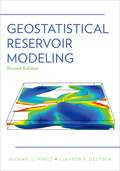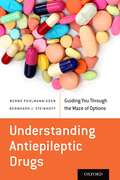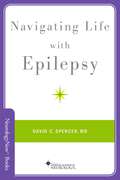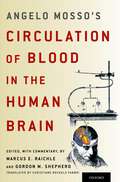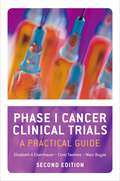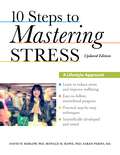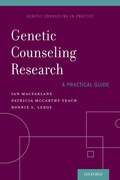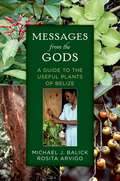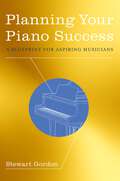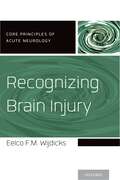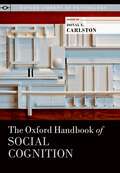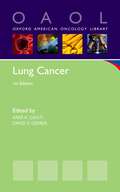- Table View
- List View
Geostatistical Reservoir Modeling
by Michael J. Pyrcz Clayton V. DeutschPublished in 2002, the first edition of Geostatistical Reservoir Modeling brought the practice of petroleum geostatistics into a coherent framework, focusing on tools, techniques, examples, and guidance. It emphasized the interaction between geophysicists, geologists, and engineers, and was received well by professionals, academics, and both graduate and undergraduate students. In this revised second edition, Deutsch collaborates with co-author Michael Pyrcz to provide an expanded (in coverage and format), full color illustrated, more comprehensive treatment of the subject with a full update on the latest tools, methods, practice, and research in the field of petroleum Geostatistics. Key geostatistical concepts such as integration of geologic data and concepts, scale considerations, and uncertainty models receive greater attention, and new comprehensive sections are provided on preliminary geological modeling concepts, data inventory, conceptual model, problem formulation, large scale modeling, multiple point-based simulation and event-based modeling. Geostatistical methods are extensively illustrated through enhanced schematics, work flows and examples with discussion on method capabilities and selection. For example, this expanded second edition includes extensive discussion on the process of moving from an inventory of data and concepts through conceptual model to problem formulation to solve practical reservoir problems. A greater number of examples are included, with a set of practical geostatistical studies developed to illustrate the steps from data analysis and cleaning to post-processing, and ranking. New methods, which have developed in the field since the publication of the first edition, are discussed, such as models for integration of diverse data sources, multiple point-based simulation, event-based simulation, spatial bootstrap and methods to summarize geostatistical realizations.
Understanding Antiepileptic Drugs: Guiding You Through the Maze of Options
by Bernd Pohlmann-Eden Bernhard J. SteinhoffUnderstanding Antiepileptic Drugs enhances patient knowledge and to acts as a facilitator to fill a significant gap in patient-physician communication in the field of epilepsy. There are several studies which show evidence that compliance in taking medication is absolutely crucial for successful medical treatment. A precondition for compliance, in addition to a trusting patient-physician relationship, is the ability to understand the medication under discussion and to be competent to be able to ask the right questions of your doctor. The ultimate goal should be to make the patient the expert of their condition. Patients often feel overwhelmed by the usual product monograph and they can become lost in complex information they do not understand or know how to prioritize.
Understanding Antiepileptic Drugs: Guiding You Through the Maze of Options
by Bernhard J. Steinhoff Bernd Pohlmann-EdenUnderstanding Antiepileptic Drugs enhances patient knowledge and to acts as a facilitator to fill a significant gap in patient-physician communication in the field of epilepsy. There are several studies which show evidence that compliance in taking medication is absolutely crucial for successful medical treatment. A precondition for compliance, in addition to a trusting patient-physician relationship, is the ability to understand the medication under discussion and to be competent to be able to ask the right questions of your doctor. The ultimate goal should be to make the patient the expert of their condition. Patients often feel overwhelmed by the usual product monograph and they can become lost in complex information they do not understand or know how to prioritize.
Navigating Life with Epilepsy (Brain and Life Books)
by David C. SpencerRoughly 3 million people in the United States have already been diagnosed with epilepsy and another 200,000 new cases are diagnosed each year. Worldwide, approximately 1 percent of the global population is diagnosed with epilepsy at some point in their lives. With the diagnosis come questions, concerns, and uncertainties from both the person diagnosed and their family. So, where to go? Navigating Life with Epilepsy provides accessible, comprehensive, and up-to-date information about epilepsy shared from the two decades of experience of epileptologist David Spencer, MD, FAAN. This book guides the reader through the initial diagnosis, offers explanations on current approaches to diagnostic testing, medications, treatment options, and life management for the patient, their family, and their caregiver. Patient's stories are peppered throughout to illustrate that you are not alone: like you, they must navigate the myriad psychosocial challenges associated with epilepsy, including everyday concerns like driving, work, and relationships. Navigating Life with Epilepsy is a perfect resource for both patients with epilepsy and the family members and friends who care for them.
Navigating Life with Epilepsy (Brain and Life Books)
by David C. SpencerRoughly 3 million people in the United States have already been diagnosed with epilepsy and another 200,000 new cases are diagnosed each year. Worldwide, approximately 1 percent of the global population is diagnosed with epilepsy at some point in their lives. With the diagnosis come questions, concerns, and uncertainties from both the person diagnosed and their family. So, where to go? Navigating Life with Epilepsy provides accessible, comprehensive, and up-to-date information about epilepsy shared from the two decades of experience of epileptologist David Spencer, MD, FAAN. This book guides the reader through the initial diagnosis, offers explanations on current approaches to diagnostic testing, medications, treatment options, and life management for the patient, their family, and their caregiver. Patient's stories are peppered throughout to illustrate that you are not alone: like you, they must navigate the myriad psychosocial challenges associated with epilepsy, including everyday concerns like driving, work, and relationships. Navigating Life with Epilepsy is a perfect resource for both patients with epilepsy and the family members and friends who care for them.
Angelo Mosso's Circulation of Blood in the Human Brain
by Marcus E. Raichle Gordon M. ShepherdModern brain imaging is revolutionizing the study of brain function in health and disease. However, few realize that its origins began in the nineteenth century with Dr. Angelo Mosso's pioneering experiments. A foremost Italian physiologist and scientist, Angelo Mosso studied several patients brought to him with head injuries that exposed their live brains to direct, long-term observation. He took advantage of these rare opportunities to document, for the first time, changes in cerebral blood flow in response to different stimuli, behaviors, and emotions, the very same changes that are now the basis for the measurements underlying modern functional brain imaging. Mosso was widely recognized by his contemporaries for his highly original studies, published both in Italian in 1878 and in German in 1881. Yet there has never been a translation through which this groundbreaking work could be appreciated by the English-speaking world. Indeed, Angelo Mosso's sophisticated experiments were to neuroscience what surgeon William Beaumont's in vivo observations were to gastric physiology fifty years earlier. This unique monograph establishes Mosso's rightful role as the pioneer of brain imaging. Through it, the modern reader, whether expert neuroscientist or interested student, can gain a new perspective on the author's remarkable insights: how behaviors as subtle as thinking about a subject or feeling an emotion produce the changes in pulsations of the brain that he observed and recorded for posterity. Special features of this volume include first a brief summary of Mosso's life. Two pioneers of modern brain imaging, Marcus E. Raichle (winner of the Kavli Prize for Neuroscience) and Gordon M. Shepherd (Yale University Professor of Neurobiology) then review Mosso's work and provide extensive commentary to explain its relevance to modern brain science. The authors not only emphasize Mosso's pioneering role in brain imaging, but also his fundamental contribution to the rise of cognitive neuroscience. The English translation (by historian of medicine Christiane Nockels Fabbri) follows, together with all of the plates and illustrations of the original volume. The result is a classic of neuroscience, now available for wide appreciation by neuroscientists, neurologists, psychologists, psychiatrists, historians of science and medicine, and the general public.
Angelo Mosso’s Circulation of Blood in the Human Brain
by Marcus E. Raichle, Gordon M. Shepherd and Christiane Nockels FabbriAngelo Mosso's Circulation of Blood in the Human Brain
by Gordon M. Shepherd Marcus E. RaichleModern brain imaging is revolutionizing the study of brain function in health and disease. However, few realize that its origins began in the nineteenth century with Dr. Angelo Mosso's pioneering experiments. A foremost Italian physiologist and scientist, Angelo Mosso studied several patients brought to him with head injuries that exposed their live brains to direct, long-term observation. He took advantage of these rare opportunities to document, for the first time, changes in cerebral blood flow in response to different stimuli, behaviors, and emotions, the very same changes that are now the basis for the measurements underlying modern functional brain imaging. Mosso was widely recognized by his contemporaries for his highly original studies, published both in Italian in 1878 and in German in 1881. Yet there has never been a translation through which this groundbreaking work could be appreciated by the English-speaking world. Indeed, Angelo Mosso's sophisticated experiments were to neuroscience what surgeon William Beaumont's in vivo observations were to gastric physiology fifty years earlier. This unique monograph establishes Mosso's rightful role as the pioneer of brain imaging. Through it, the modern reader, whether expert neuroscientist or interested student, can gain a new perspective on the author's remarkable insights: how behaviors as subtle as thinking about a subject or feeling an emotion produce the changes in pulsations of the brain that he observed and recorded for posterity. Special features of this volume include first a brief summary of Mosso's life. Two pioneers of modern brain imaging, Marcus E. Raichle (winner of the Kavli Prize for Neuroscience) and Gordon M. Shepherd (Yale University Professor of Neurobiology) then review Mosso's work and provide extensive commentary to explain its relevance to modern brain science. The authors not only emphasize Mosso's pioneering role in brain imaging, but also his fundamental contribution to the rise of cognitive neuroscience. The English translation (by historian of medicine Christiane Nockels Fabbri) follows, together with all of the plates and illustrations of the original volume. The result is a classic of neuroscience, now available for wide appreciation by neuroscientists, neurologists, psychologists, psychiatrists, historians of science and medicine, and the general public.
Phase I Cancer Clinical Trials: A Practical Guide
by Elizabeth A. Eisenhauer Christopher Twelves Marc BuysePhase I trials are a critical first step in the study of novel cancer therapeutic approaches. Their primary goals are to identify the recommended dose, schedule and pharmacologic behavior of new agents or new combinations of agents and to describe the adverse effects of treatment. In cancer therapeutics, such studies have particular challenges. Due to the nature of the effects of treatment, most such studies are conducted in patients with advanced malignancy, rather than in healthy volunteers. Further, the endpoints of these trials are usually measures adverse effects rather than molecular target or anti-tumor effects. These factors render the design, conduct, analysis and ethical aspects of phase I cancer trials unique. As the only comprehensive book on this topic, Phase I Cancer Clinical Trials is a useful resource for oncology trainees or specialists interested in understanding cancer drug development. New to this edition are chapters on Phase 0 Trials and Immunotherapeutics, and updated information on the process, pitfalls, and logistics of Phase I Trials
Phase I Cancer Clinical Trials: A Practical Guide
by Elizabeth A. Eisenhauer, Chris Twelves and Marc BuysePhase I trials are a critical first step in the study of novel cancer therapeutic approaches. Their primary goals are to identify the recommended dose, schedule and pharmacologic behavior of new agents or new combinations of agents and to describe the adverse effects of treatment. In cancer therapeutics, such studies have particular challenges. Due to the nature of the effects of treatment, most such studies are conducted in patients with advanced malignancy, rather than in healthy volunteers. Further, the endpoints of these trials are usually measures adverse effects rather than molecular target or anti-tumor effects. These factors render the design, conduct, analysis and ethical aspects of phase I cancer trials unique. As the only comprehensive book on this topic, Phase I Cancer Clinical Trials is a useful resource for oncology trainees or specialists interested in understanding cancer drug development. New to this edition are chapters on Phase 0 Trials and Immunotherapeutics, and updated information on the process, pitfalls, and logistics of Phase I Trials
10 Steps to Mastering Stress: A Lifestyle Approach, Updated Edition
by Ph.D. David H. Barlow Ph.D. Ronald M. Rapee M.A. Sarah PeriniWe know that stress is bad for us. We see evidence of this in the news, we hear it from our doctors, and we feel it at the end of a hectic week. Health professionals have learned that stress interferes with our lives-it increases missed work days, can lead to relationship difficulties, and can increase the risk of turning to drugs and alcohol. It has also been shown that in some cases, chronic stress can increase our risk of developing certain serious illnesses. We know of all these negative effects that stress can cause, but, realistically, for most of us there's no end in sight-stressful events will crop up throughout our lives and even daily. We can't stop stressful events from happening, but we can change our lifestyles to better handle stressful situations. The authors of 10 Steps to Mastering Stress, renowned stress and anxiety experts David Barlow, Ronald Rapee, and Sarah Perini, have designed a proven step-by-step program that will help you identify what is causing your stress, teach you calming techniques, and provide you with a realistic approach to reducing your daily stress. This updated edition now includes: *detailed case studies based on real clients the authors have treated, so you can see how every stage of the program is implemented. *new material incorporating mindfulness-based stress reduction strategies and added information on how to deal with real-life problems. *streamlined steps that make the program more efficient and even easier to follow. Based on nearly two decades of research, 10 Steps to Mastering Stress has been scientifically developed and tested to ensure that it is the most effective way to control stress. Readers will learn valuable new skills-new ways of thinking, acting, and organizing their lives to reduce stress to a manageable level.
10 Steps to Mastering Stress: A Lifestyle Approach, Updated Edition
by David H. Barlow; Ronald M. Rapee; Sarah Perini10 Steps to Mastering Stress: A Lifestyle Approach, Updated Edition
by Ph.D. David H. Barlow Ph.D. Ronald M. Rapee M.A. Sarah PeriniWe know that stress is bad for us. We see evidence of this in the news, we hear it from our doctors, and we feel it at the end of a hectic week. Health professionals have learned that stress interferes with our lives-it increases missed work days, can lead to relationship difficulties, and can increase the risk of turning to drugs and alcohol. It has also been shown that in some cases, chronic stress can increase our risk of developing certain serious illnesses. We know of all these negative effects that stress can cause, but, realistically, for most of us there's no end in sight-stressful events will crop up throughout our lives and even daily. We can't stop stressful events from happening, but we can change our lifestyles to better handle stressful situations. The authors of 10 Steps to Mastering Stress, renowned stress and anxiety experts David Barlow, Ronald Rapee, and Sarah Perini, have designed a proven step-by-step program that will help you identify what is causing your stress, teach you calming techniques, and provide you with a realistic approach to reducing your daily stress. This updated edition now includes: *detailed case studies based on real clients the authors have treated, so you can see how every stage of the program is implemented. *new material incorporating mindfulness-based stress reduction strategies and added information on how to deal with real-life problems. *streamlined steps that make the program more efficient and even easier to follow. Based on nearly two decades of research, 10 Steps to Mastering Stress has been scientifically developed and tested to ensure that it is the most effective way to control stress. Readers will learn valuable new skills-new ways of thinking, acting, and organizing their lives to reduce stress to a manageable level.
Genetic Counseling Research: A Practical Guide (Genetic Counseling in Practice)
by Ian MacFarlane Patricia McCarthy Veach Bonnie LeRoyGenetic Counseling Research: A Practical Guide is the first text devoted to research methodology in genetic counseling. This text offers step-by-step guidance for conducting research, from the development of a question to the publication of findings. Genetic counseling examples, user-friendly worksheets, and practical tips guide readers through the research and publication processes. With a highly accessible, pedagogical approach, this book will help promote quality research by genetic counselors and research supervisors--and in turn, increase the knowledge base for genetic counseling practice, other aspects of genetic counseling service delivery, and professional education. It will be an invaluable resource to the next generation of genetic counseling and its surrounding disciplines.
Genetic Counseling Research: A Practical Guide
by Ian M. MacFarlane, Patricia McCarthy Veach and Bonnie S. LeRoyGenetic Counseling Research: A Practical Guide (Genetic Counseling in Practice)
by Bonnie LeRoy Patricia McCarthy Veach Ian MacFarlaneGenetic Counseling Research: A Practical Guide is the first text devoted to research methodology in genetic counseling. This text offers step-by-step guidance for conducting research, from the development of a question to the publication of findings. Genetic counseling examples, user-friendly worksheets, and practical tips guide readers through the research and publication processes. With a highly accessible, pedagogical approach, this book will help promote quality research by genetic counselors and research supervisors--and in turn, increase the knowledge base for genetic counseling practice, other aspects of genetic counseling service delivery, and professional education. It will be an invaluable resource to the next generation of genetic counseling and its surrounding disciplines.
Messages from the Gods: A Guide to the Useful Plants of Belize
by Michael J. Balick Rosita ArvigoDespite its small size, Belize is one of the most ecologically and culturally diverse nations in Central America. Over 3,400 species of plants can be found here, within a diversity of ecological habitats. Because of this, Belize is paradise for ecotourists, hosting over 900,000 visitors annually, who enjoy the natural habitat and friendly people of this nation. Many of the plants of Belize have a long history of being "useful," with properties that have served traditional herbal healers of the region as well as those who use plants as food, forage, fiber, ornament, in construction and ritual, along with many other purposes. With Messages from the Gods: A Guide to the Useful Plants of Belize, Drs. Michael Balick and Rosita Arvigo give us the definitive resource on the many species of plants in Belize and their folklore, as well as the natural history of the region and a detailed discussion of "bush" uses of plants, including for traditional healing and life in the forest, past and present. Both Balick and Arvigo bring important perspectives to the project, Balick as ethnobotanical scientist from The New York Botanical Garden, and Arvigo as a former apprentice to a Belizean healer and an experienced physician. The book has been decades in the making, a culmination of a biodiversity research project that The New York Botanical Garden and international and local collaborators have had in motion since 1987. Drs. Balick, Arvigo and their colleagues have collected and identified thousands of plants from the region, and have worked extensively with hundreds of Belizean people, many of them herbal healers and bushmasters, to record uses for many of the species. This collaboration with local plant experts has produced a fascinating discussion of the intersection of herbal medicine and spiritual belief in the area, and these interviews are used to compliment and contextualize the numerous species accounts presented. The book is both a cultural study and a specialized field guide; information is provided on many different native and introduced plants in Belize and their traditional and contemporary uses including as food, medicine, fiber, in spiritual practices and many other purposes. Richly illustrated with over 600 images and photographs, Messages from the Gods: A Guide to The Useful Plants of Belize will serve as the primary reference and guide to the ethnobotany of Belize for many years to come.
Planning Your Piano Success: A Blueprint for Aspiring Musicians
by Stewart GordonYoung pianists pursuing a professional career face a barrage of questions, choices, and challenges. In this book, experienced teacher and performer Stewart Gordon offers a new and practical way to approach them by helping readers to plan strategically and build a secure and successful career from the ground up. For decades, Gordon has guided young pianists through the details of how to prepare musically, navigate their college years, and forge a career that will provide a livelihood. In this guide to beginning that musical career, Gordon has assembled the wisdom of decades of teaching: a fundamental body of information emerging pianists will rely on as they work toward their goals. His advice, focused on both mental and practical work, will enhance both motivation and security. Carefully balancing aspiration with reality and inspiration with organization, Gordon creates a blueprint for transforming dreams into achievement, and illustrates his points with examples drawn from the lives of famous musicians. The book also addresses many practical matters, such as developing keyboard technique, acquiring reading and memorizing skills, building repertoire, and balancing the demands of being a musician with living a full life. This volume is a valuable resource for both young pianists and their parents.
Recognizing Brain Injury (Core Principles of Acute Neurology)
by Eelco F.M. WijdicksThis book is the first of 4 books on the core principles of acute neurology. This book is a primer -and a great deal more-on how to clinically recognize acute brain injury and to treat its consequences. Acute brain injury -often changes the dynamics of cerebral blood flow, cerebrospinal fluid mechanics and eventually intracranial pressure. And furthermore, acute brain and spine injury impacts on heart function, blood pressure control, breathing regulation and even gastric and bladder function. It is necessary to not only understand these fundamentals but also how certain measures could influence or correct these manifestations. Major concepts are illustrated to facilitate understanding. Each chapter concludes with a section that explains its relevance to clinical practice.The book truly combines basic neuroscience with practical know- how in an easy to read prose useful for both the novice and expert.
Recognizing Brain Injury (Core Principles of Acute Neurology)
by Eelco F.M. WijdicksThis book is the first of 4 books on the core principles of acute neurology. This book is a primer -and a great deal more-on how to clinically recognize acute brain injury and to treat its consequences. Acute brain injury -often changes the dynamics of cerebral blood flow, cerebrospinal fluid mechanics and eventually intracranial pressure. And furthermore, acute brain and spine injury impacts on heart function, blood pressure control, breathing regulation and even gastric and bladder function. It is necessary to not only understand these fundamentals but also how certain measures could influence or correct these manifestations. Major concepts are illustrated to facilitate understanding. Each chapter concludes with a section that explains its relevance to clinical practice.The book truly combines basic neuroscience with practical know- how in an easy to read prose useful for both the novice and expert.
The Oxford Handbook of Social Cognition (Oxford Library of Psychology)
Social cognition, as a field, can be characterized as a distinct subarea of social psychology that examines all of the countless cognitive complexities, mental representations, and processes implicated in interaction, as well as an approach to studying interactions in the context of the groups, cultures, and societies to which they belong. Together these two facets of social cognition create one of the most influential and important social sciences to come along in some time. Providing a comprehensive review of major topics in the field of social cognition, The Oxford Handbook of Social Cognition expresses that excitement and fascination in describing the content and approach that constitute the field today. The 43 chapters included in this handbook cover: - central aspects of the field of social cognition, including its history and historically important foundational research areas (attribution, attitudes, impression formation, and prejudice/stereotyping), along with methodology - core issues relating to social cognitive representations and processes (including those that are visual, implicit, or automatic) and the stages of information processing (attention, perception, memory, and judgment, along with simulation and thought suppression) - applications of the social cognition approach to areas of social psychology, general psychology, and other disciplines, such as marketing, law, health and politics After more than 30 years, the vibrant field of social cognition continues to reign as one of psychology's most dominant approaches. The impressive chapters collected in this volume define the field and contribute enormously to our understanding of what social cognition is today.
Lung Cancer (Oxford American Oncology Library)
by Apar Kishor Ganti David E. GerberLung cancer is the most common cause of cancer-related death in the world. Recently, better understanding of the biology of lung cancer has led to the development of newer targeted therapies for specific subpopulations of lung cancer patients. While this has led to multiple exciting advances that promise to improve outcomes in the future, there has also been a significant increase in the complexity of care of the lung cancer patient. Part of the Oxford American Oncology Library, this concise handbook identifies best-practice guidelines, as well as differences of opinion in the field. It presents the most current procedures for the diagnosis and management of lung cancer in a succinct and easy-to-read manner. Chapters focus on topics such as the biology, pathology, and staging of lung cancer, special populations, and supportive care. Lung Cancer is a must-have tool for busy oncologists.
